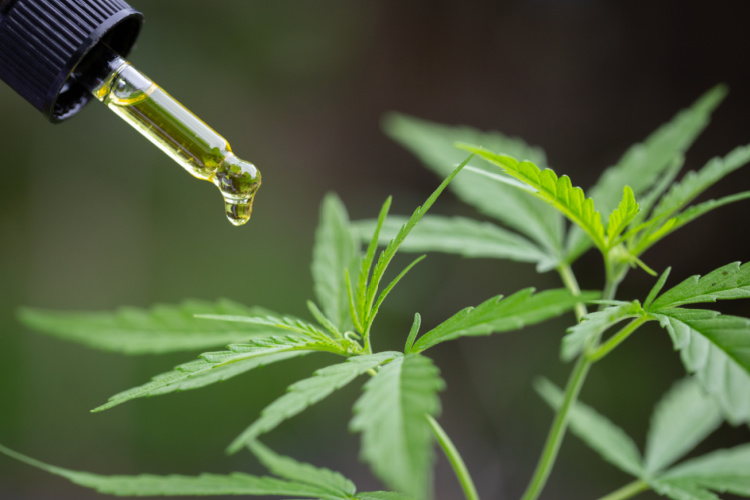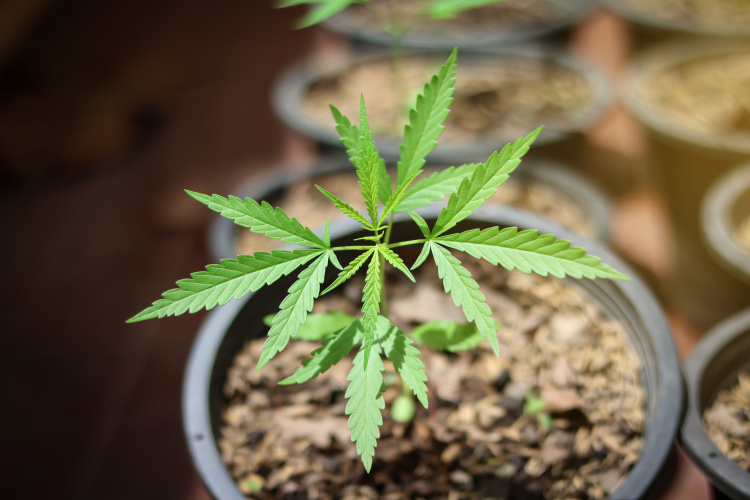For years now, researchers have theorized that the cannabis plant’s cannabinoids, terpenes, flavonoids, and other compounds work together to produce what’s called the entourage (or ensemble) effect. The idea is that by working in harmony, these various natural chemicals enact more useful and powerful effects on our bodies than they do on their own.
The origins of the ensemble effect lie in a paper published by Dr. Ethan Russo in 2011. Theorizing that specific compounds interact for specific effects, the paper is quite granular in parts, suggesting that the terpene caryophyllene might work with the cannabinoid CBD to help treat addiction, for instance.
Some aspects of the ensemble effect aren’t particularly controversial. Studies have demonstrated, for instance, that cannabis with an equal ratio of THC to CBD can produce greater pain-fighting effects than THC on its own, or that CBD can mitigate some of the less beneficial side-effects of THC.
But one interaction that’s less understood is the one that occurs between cannabinoids and terpenes such as pinene, humulene, linalool, and others still. Some early research supports the notion that these terpenes are enacting a less-understood synergy. What does the science say? Let’s take a deep dive into the mechanics of the ensemble effect!

The Ensemble Effect: Terpenes, Cannabinoids, and The Endocannabinoid System
You’re probably already familiar with cannabinoids, the major players when it comes to the cannabis plant’s medicinal effects. THC, for instance, imparts the plant’s characteristic euphoric “high”—among many other effects—some research suggests that THC has potential in the treatment of several types of seizures as well as potentially mitigating anxiety and some psychological disorders.
What’s important to note here is that the cannabinoids interact with a regulatory network in the body called the Endocannabinoid System (ECS), specifically by acting upon receptors known as CB1 and CB2. Terpenes, on the other hand, are more mysterious in their mechanism of action in the body.
A family of fragrant oils, terpenes give different strains their characteristic flavors and aromas. There are believed to be over 200 different terpenes in cannabis; in addition to lending their enticing odors, they can elicit many useful physiological actions. The verdict is still out on the significance of the role terpenes play.

Are these terpenes and cannabinoids interacting to boost the therapeutic effects of cannabis? Early research is indicating that it may. For instance, one study published in 2011 suggests that the terpene alpha-pinene interacts with THC. Another, more recent study found that selected terpenes, including linalool and humulene, boosted the activity of the cannabinoids. Later on in 2020, a study found that—at least using an in vitro rodent model—several common terpenes directly activated ECS receptor cells.
Still, there are dissenting opinions. One study from 2020 found the exact opposite, concluding that five common terpenes—including alpha-pinene and myrcene, the most common terpene—all failed to elicit an ensemble effect by binding to the receptors in the ECS.
Does that seal the deal? Hardly. As we mentioned earlier, researchers know that at least some terpenes interact with regulatory networks other than the ECS. Could it be that the interactions between terpenes and cannabinoids happen through some other, as-yet-undetermined mechanism? For the moment at least, the answer will have to be—wait for it—“More research is needed.”

The Ensemble Effect: Looking Ahead
Fortunately, more research is underway. A professor at Johns Hopkins University has obtained a grant to study three kinds of cannabinoid/terpene interactions. Needless to say, we’ll be keeping a close eye on the findings.
And again, a large body of evidence supports the conclusion that—at least when it comes to interactions among cannabinoids—the ensemble effect is both real and medically useful.
One thing is certain: In the years to come, a great deal of research attention will be focused on the ensemble effect. We’re confident that once it’s fully understood, doctors will be able to create highly targeted and specific treatments from this fascinating plant-based powerhouse.
Do you have further questions about the ensemble effect? You can read more about this fascinating aspect of the cannabis plant, or reach out to us directly with any questions. We’re always here to help!
Please note that qualifying conditions vary by state, and the information relating to qualifying conditions may not apply to cannabis patients in all states.
Product availability also varies based on state program restrictions and rules, so the products discussed may not be available in all states. Be sure to check with your local Green Goods location about the products available in your state!
